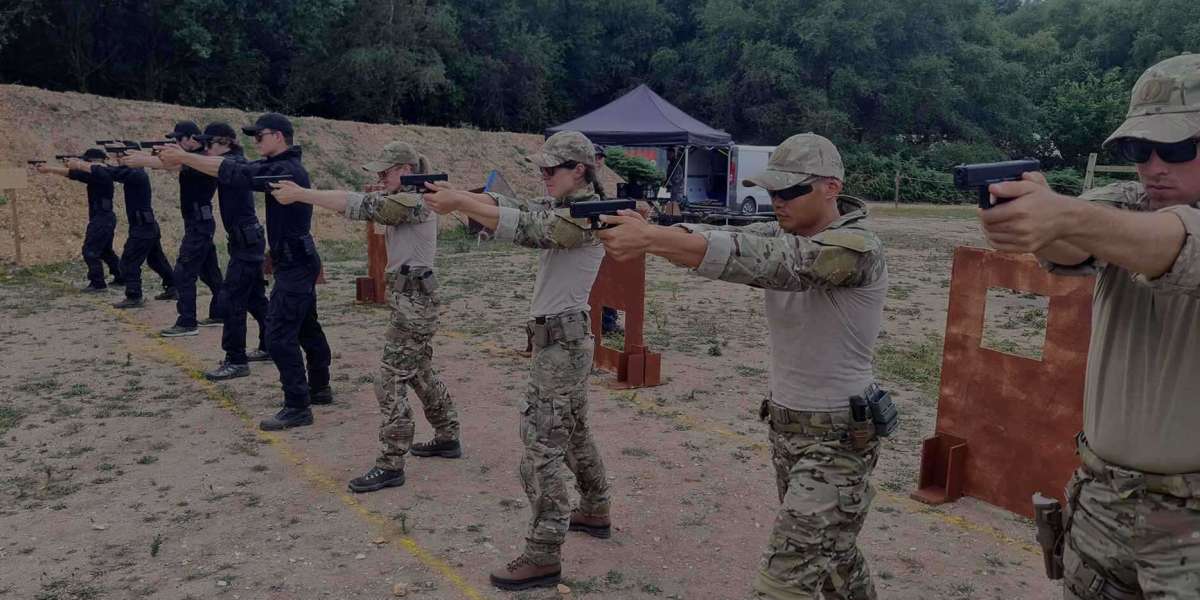When it comes to TV and film productions, getting the on-screen action right is crucial, especially in action-packed scenes involving firearms. Authenticity is key to creating compelling visuals, and mastering the firearm skill set training is essential for actors and stunt professionals alike. Whether you're portraying a highly trained military character or an undercover cop, proper firearm handling adds depth and realism to your performance.
So, how do you get it right? In this article, we'll dive into the most important techniques you need to master when handling firearms for TV and film. From stance and grip to accuracy and weapon safety, we'll cover everything to ensure you're prepared for your next role.
Why Firearm Skill Set Training Matters in TV and Film
Before we jump into the techniques, it's important to understand why firearm skill set training is vital for actors. First off, improper handling of weapons on set can lead to dangerous accidents, compromising safety for everyone involved. Additionally, poorly executed firearm techniques can ruin the authenticity of a scene, making it look unrealistic and taking the audience out of the story.
Training under professionals who offer Theatrical Firearm Training ensures that actors and stunt professionals are not only safe but also skilled in conveying the precision and professionalism that real-life soldiers or law enforcement officers would demonstrate. For anyone working in TV or film, firearm skill set training is non-negotiable.
Key Firearm Techniques for On-Screen Mastery
1. Stance: The Foundation of Control
A solid stance is fundamental to all shooting techniques. When working in Theatrical Firearm Training, you'll learn that a balanced and grounded stance is essential for maintaining control over the weapon, especially when firing.
The proper stance allows actors to appear confident and in control, regardless of whether they’re portraying a skilled sniper or a novice shooter. A few common stances include the isosceles stance, where the arms form a triangle when extended, and the weaver stance, which involves a slightly staggered foot placement. Both stances are frequently used in firearm skill set training and are chosen based on the actor's role and the specific scene being shot.
2. Grip: Holding the Firearm with Precision
Grip refers to how the hands hold the weapon, and it plays a significant role in controlling recoil and maintaining accuracy. When gripping a firearm, actors need to understand how to apply firm pressure without becoming rigid or over-gripping the gun.
The key here is to have a balanced grip that controls the weapon’s movement without compromising mobility. Actors trained through a weapons training course will learn that an improper grip can result in awkward or unrealistic scenes, detracting from the believability of the character.
3. Trigger Control: Achieving Accuracy
One of the most critical parts of firearm skill set training is learning how to control the trigger. This involves squeezing, not jerking, the trigger to ensure accurate shots. A sudden or harsh pull on the trigger can lead to missing the intended target on-screen and negatively affect the performance.
In Theatrical Firearm Training, actors practice smooth and consistent trigger pulls to ensure that the firing motion looks natural and professional. The technique is especially vital during close-up shots where viewers can clearly see the firearm in action.
4. Recoil Management: Keeping it Realistic
Recoil is the backward movement of the firearm when a shot is fired, and managing it correctly on-screen is crucial for realism. In firearm skill set training, actors are taught how to anticipate and manage recoil in a way that looks convincing.
A key aspect of this is ensuring that the recoil is appropriate for the type of firearm being used. For example, a heavy assault rifle will have a more substantial recoil compared to a small handgun. Proper recoil management prevents over-exaggeration, which can sometimes make a scene look more comedic than intense.
5. Safety First: Understanding On-Set Weapon Protocol
Safety should always be the number one priority when handling firearms on set. This includes understanding the basic safety rules, such as treating every firearm as if it’s loaded and never pointing the weapon at anyone, even during rehearsal.
By undergoing a weapons training course, actors gain an understanding of both firearm operation and safety protocols that minimize risks during filming. Safe practices ensure that everyone on set, from actors to crew members, is protected while delivering a believable performance.
6. Movement and Reloading: Adding Dynamic Action
In TV and film, it’s not enough to simply stand still and fire a gun. Characters often move through intense action sequences that involve running, ducking for cover, and reloading their weapons. These moments are where an actor's training really shines.
Firearm skill set training also focuses on dynamic movement, teaching actors how to reload while maintaining control over the firearm. Whether they're changing magazines or chambering a new round, these actions need to be fluid and believable.
7. Simulated Combat: Bringing Action to Life
Simulated combat scenarios are another crucial part of Theatrical Firearm Training. Here, actors are put in scenarios where they must react to multiple stimuli, including firing at targets, taking cover, and communicating with fellow actors in combat sequences.
This training adds a layer of realism to action scenes, helping actors respond naturally in high-pressure situations. Simulated combat also teaches actors how to work as a team, which is essential for large-scale battle scenes or SWAT team sequences.
How Firearms Training and Military Advisory Services Ensure Realism in TV and Film
It's one thing to understand the individual techniques of firearm handling, but it's another to apply these techniques in a way that translates seamlessly on-screen. That's where Firearms Training and Military Advisory Services come into play. These services, offered by companies like Exsilium, provide actors and production teams with expert guidance to ensure every aspect of firearm use is accurate and safe.
Customized Training for Specific Roles
Actors portraying specialized roles, such as military personnel or law enforcement, require a higher level of realism. Firearm Skill Set Training can be tailored to the specific demands of these roles. For instance, actors playing soldiers may need to learn how to clear rooms tactically, while law enforcement characters may need to focus on swift, precise decision-making in high-pressure situations.
Weapons Handling for Different Types of Firearms
Whether an actor is using a handgun, shotgun, or automatic weapon, each firearm type requires different handling techniques. Theatrical Firearm Training will cover everything from smaller handguns to larger rifles, ensuring that the actor knows how to handle each weapon realistically. This is particularly important for action-packed sequences where different weapons are used in quick succession.
Conclusion: Mastering Firearm Skill Set Training for a Polished Performance
Handling firearms on screen isn’t just about looking cool; it’s about authenticity, safety, and delivering a performance that resonates with the audience. Whether you're a lead actor or a supporting role in an action-packed film, mastering the firearm skill set training will elevate your performance and make your character more believable.
From stance and grip to accuracy and safety, each element plays a crucial role in crafting a convincing on-screen portrayal. If you’re serious about bringing authenticity to your next role, enrolling in a weapons training course or Theatrical Firearm Training with professionals like Exsilium is the best way to get there.
By perfecting these techniques, you’ll not only improve your skills but also contribute to creating a safer and more immersive experience on set.









